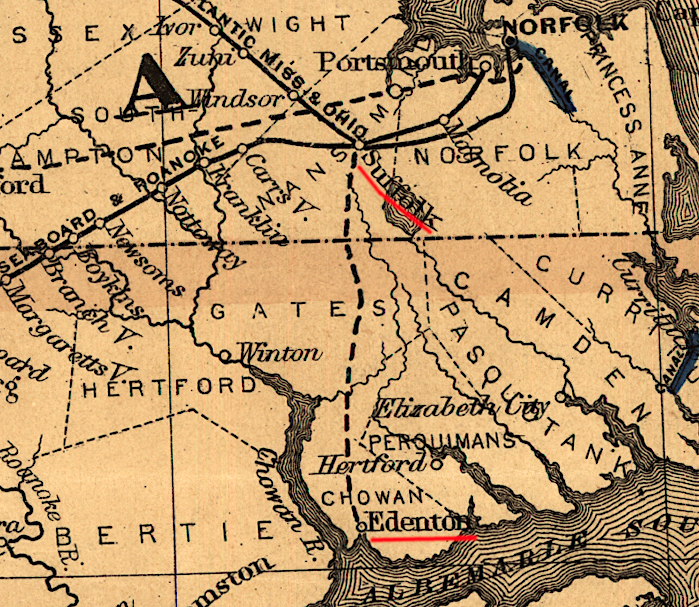
the Suffolk & Carolina Railway planned in 1874 to connect Suffolk and Edenton
Source: Library of Congress, Map of the Seaboard & Raleigh Railroad and its connections (1874)

the Suffolk & Carolina Railway planned in 1874 to connect Suffolk and Edenton
Source: Library of Congress, Map of the Seaboard & Raleigh Railroad and its connections (1874)
The Suffolk & Carolina Railway started as the Nansemond Land, Lumber and Narrow-Gauge Railway Company in 1873. It was renamed to "Suffolk & Carolina Railway" a year later, getting a charter from the General Assembly on February 26, 1874.2
"Suffolk & Carolina Railway Company," Annual Report, Virginia, Railroad Commissioner, 1898, p.203, https://books.google.com/books?id=mCUaAQAAIAAJ (last checked June 2, 2020)
The narrow-gauge railroad carried harvested crops and forest products from the timberlands of northeastern North Carolina to Suffolk. By 1887, the Suffolk & Carolina Railway was a broad gauge railroad with 40 miles of track stretching between Suffolk and the Chowan River.
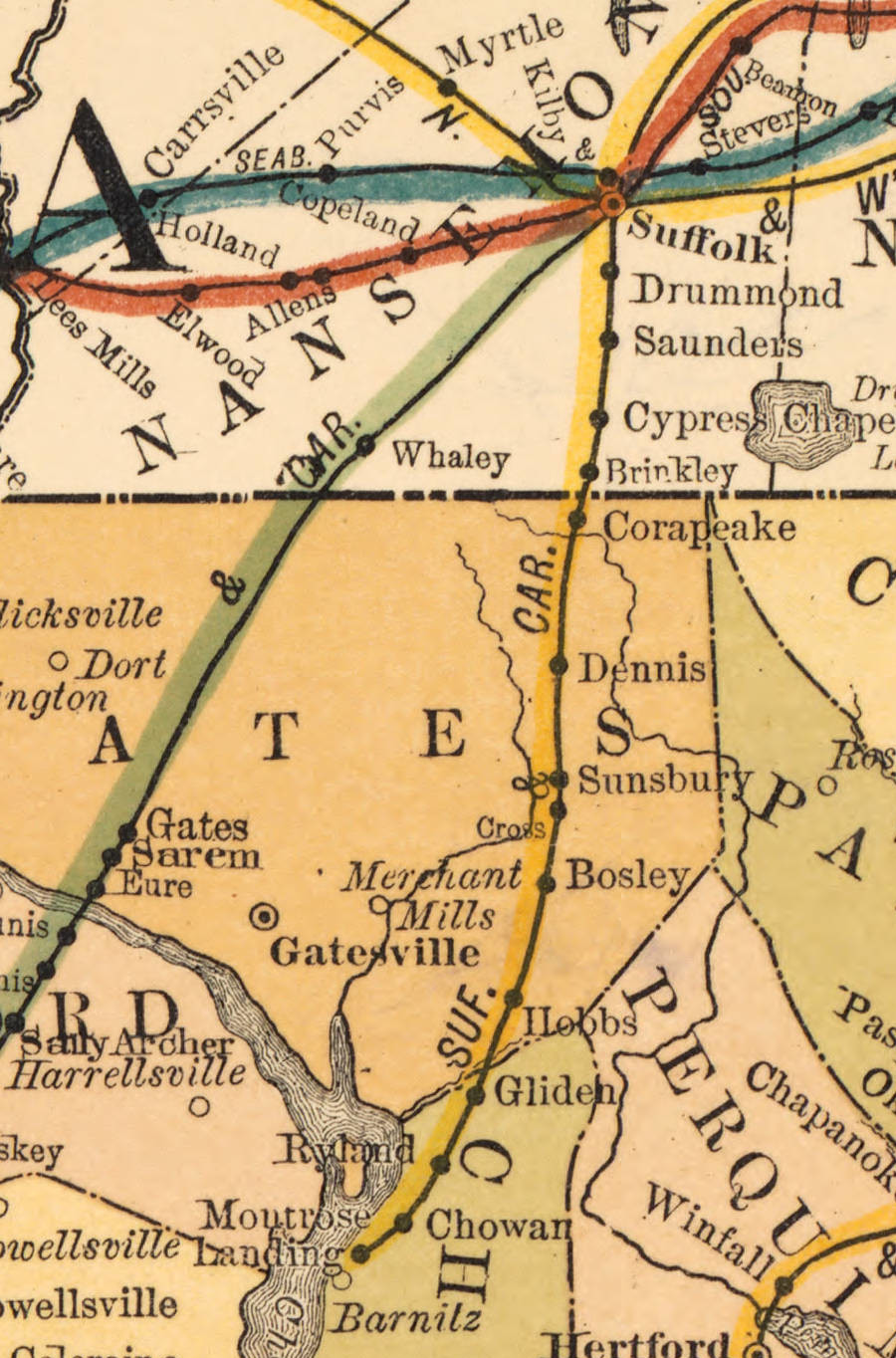
the Suffolk & Carolina Railway was a narrow gauge railroad connecting Suffolk to the Chowan River in 1900
Source: University of North Carolina Libraries, Railroad map of North Carolina 1900 (by Henry C. Brown, 1900)
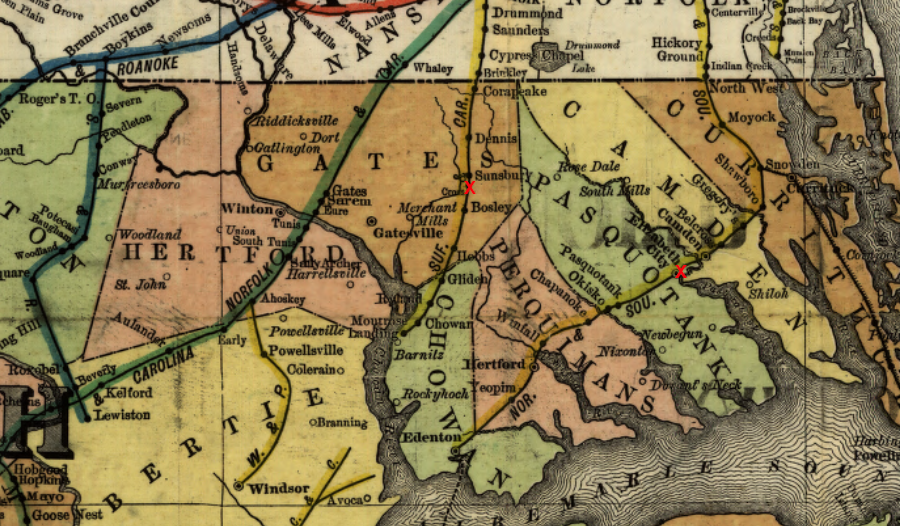
the Suffolk & Carolina Railway and the original Norfolk Southern Railroad lacked a connection in 1900, but in 1904 built a 25-mile branch connecting the red X's on map
Source: Library of Congress, Railroad map of North Carolina, 1900 (H. C. Brown, 1900)
By 1902, the railroad had been extended south to Edenton. At Edenton, it connected to the "original" Norfolk Southern Railroad.
In 1904 the Suffolk & Carolina Railway also built a 25-mile branch east to the port city of Elizabeth City, on the Pasquotank River.
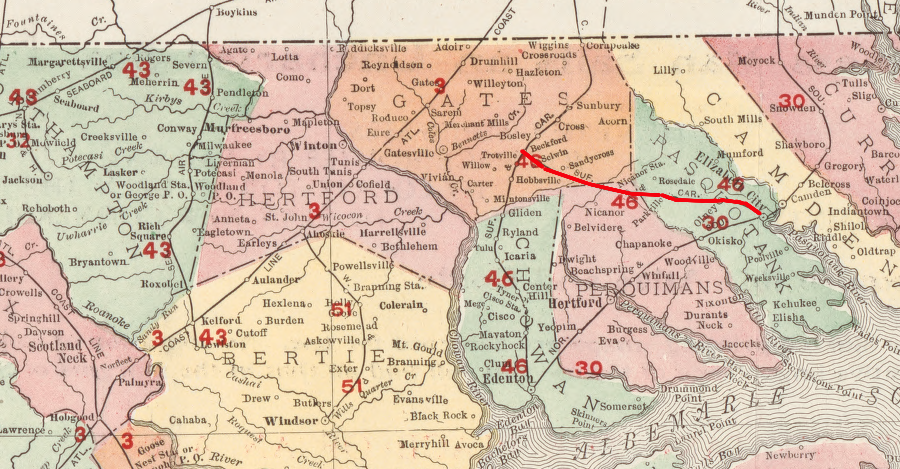
an extension of the Suffolk & Carolina Railway closed the gap between Beckford Junction and Elizabeth City
Source: Library of Congress, North Carolina (Rand McNally and Company, 1905)
The railroad's name was changed to Virginia & Carolina Coast Railroad in 1906. Within the same month, it was merged into the "original" Norfolk Southern Railroad and lost its corporate identity.1
The Norfolk Southern Railroad abandoned the track connecting Edenton-Suffolk, and the branch off that line to Elizabeth City, in 1940.2
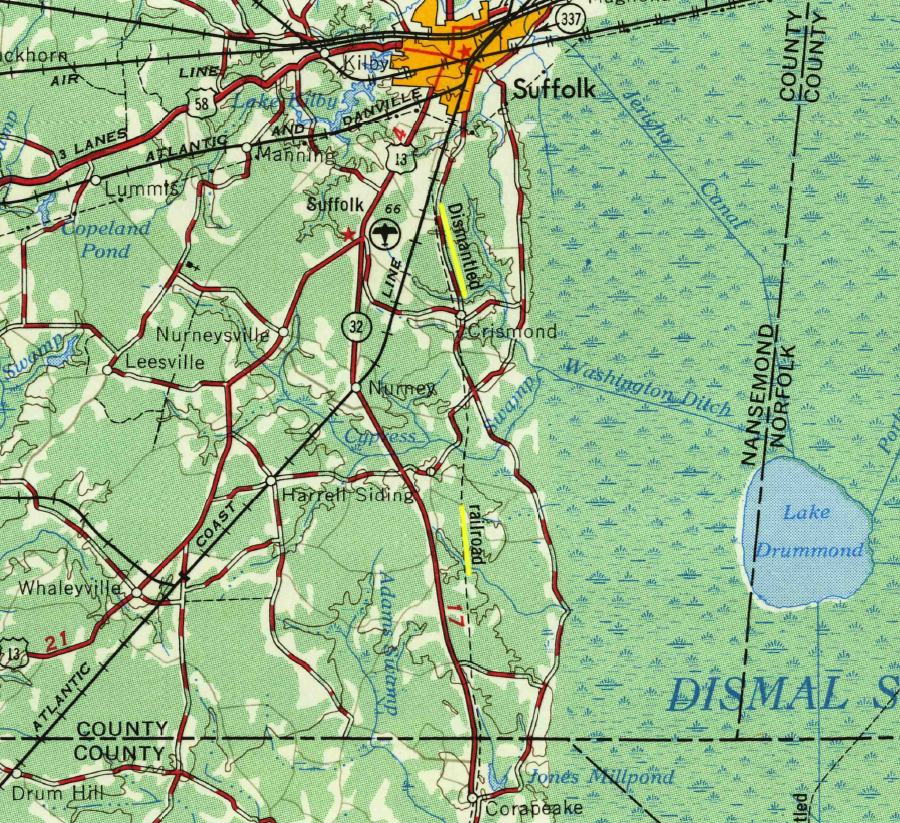
the Suffolk and Carolina Railroad was mapped as "dismantled" in 1953
Source: US Geological Survey (USGS), Norfolk VA 1,250,000 topographic quadrangle (1953)
The Southern Railway acquired the "original" Norfolk Southern Railroad in 1974. In 1982, the route established by the Suffolk & Carolina Railway almost a century earlier became part of the modern Norfolk Southern Railroad, created by the merger of the Southern Railway and the Norfolk and Western Railroad. The Norfolk Southern then started its Thoroughbred Shortline Program to offload low-profit routes to smaller companies. The remaining parts of the Suffolk & Carolina Railway ended up in the Chesapeake and Albemarle Railroad.3
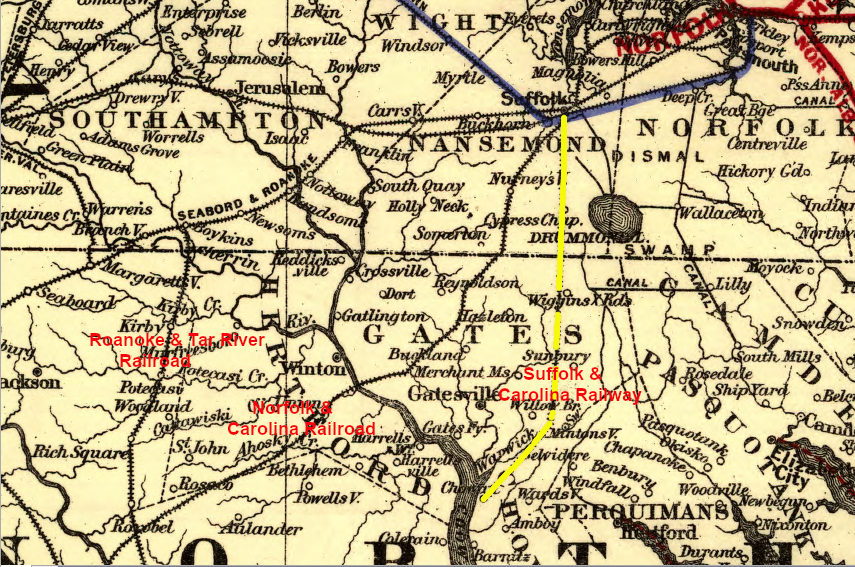
the Suffolk & Carolina Railway (yellow) in 1891, with Norfolk & Carolina Railroad to the west
Source: Library of Congress, Maps showing the Norfolk, Albermarle & Atlantic Railroad and its connections (G.W. & C.B. Colton & Co., 1891)
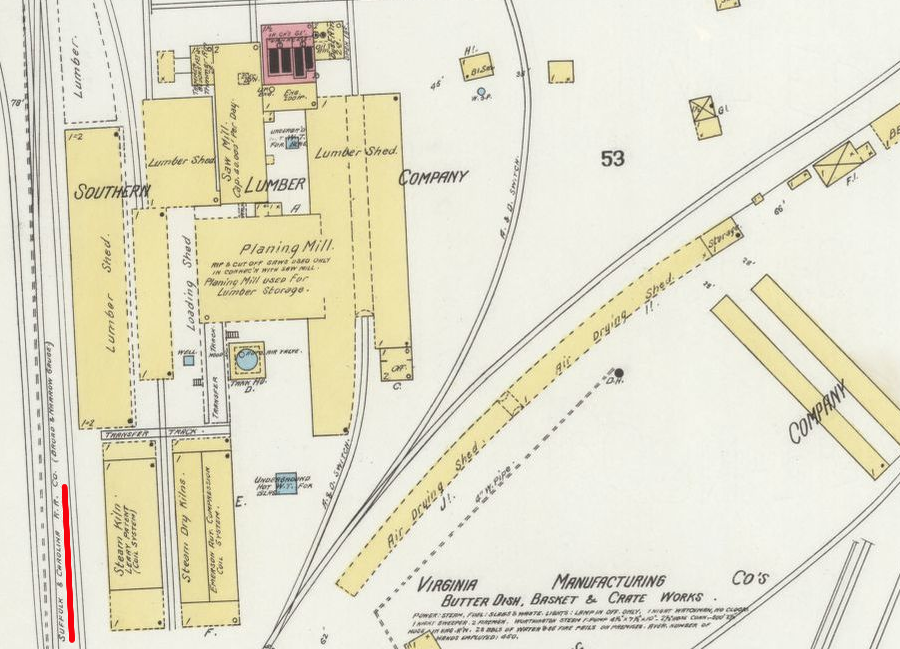
the Suffolk and Carolina Railroad stopped at the mills in Suffolk, and did not connect to a shipping terminal in Portsmouth or Norfolk
Source: Library of Congress, Sanborn Fire Insurance Map from Suffolk (Sanborn Map Company, April 1898)
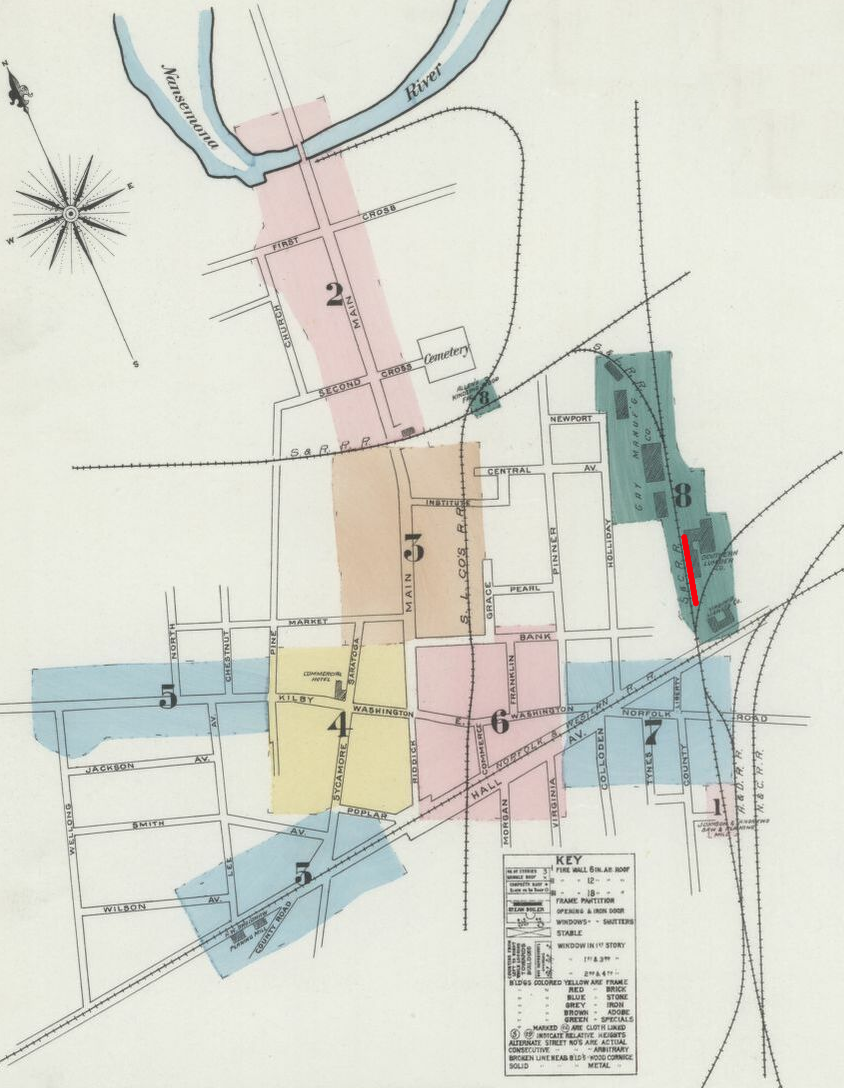
the Suffolk & Carolina Railway was one of several railroads that brought logs from the swamps to mills in Suffolk
Source: Library of Congress, Sanborn Fire Insurance Map from Suffolk (Sanborn Map Company, April 1889)